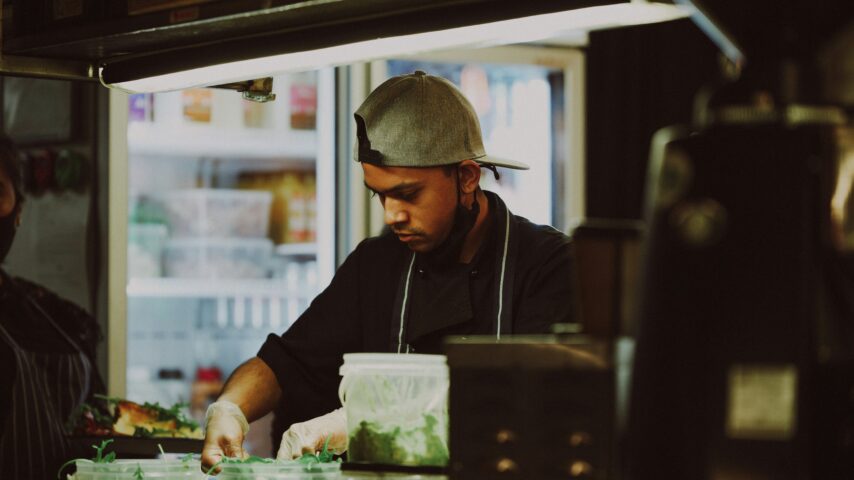This week our partners at Marketman have written a guide to inventory costing, one of the most challenging aspects of managing stock within a restaurant. Read on to learn all about the different methods you can use as well as how Marketman can help.
As a restaurateur, the success of your establishment hinges on creating great recipes and sourcing quality ingredients at sustainable prices. However, food costs average around 29% of restaurant expenses making developing an effective inventory costing strategy a must.
This can be a huge challenge, though, due to not being able to forecast customer demand, and limited shelf lives.
Inventory costing is a way restaurant owners can make sure they’re keeping sustainable practices. It’s the process of assigning a specific cost to inventory rather than focusing on the sticker price of the ingredients. Costing also accounts for hidden inventory costs such as:
- Cost of space: Restaurants have finite amounts of space. You need to ensure that you’re striking the right balance between storage areas, the kitchen, and general dining area, to maximise revenue.
- Cost of money: If you carry debt to purchase inventory, then you need to account for the interest cost in the purchase price. If you don’t have debt, you need to account for the interest income that is lost with this purchase.
- Cost of obsolescence: Even the most experienced restaurant professionals must write off spoiled inventory and damaged goods.
The truth is inventory costing is complicated, which is why many restaurateurs use inventory management platforms to gain control and visibility of their inventory. But, if you’re not using a tech solution, one of the formulas below can help you calculate your inventory costs.
First-In, First-Out (FIFO)
First-in, first-out inventory measurement is the most common inventory costing technique as it’s easy, reliable and accurate. FIFO assumes that goods purchased first, are sold first – usual practice in restaurants as chefs tend to use the ingredients that are closest to expiration first.
Implementing FIFO costing in your restaurant is simple. You only need to mark inventory with its arrival date, and then shelve those items behind existing stock. By using inventory before it goes out of date, restaurants can use the current cost of goods for their financial reporting. This also helps restaurants minimise financial burdens due to rising ingredient prices.
Despite these advantages, FIFO also has a couple of negatives. The first is that FIFO costing results in higher tax bills because restaurants end up showing a higher profit. The second disadvantage is that organising and tracking products in the order they came in can sometimes be operationally challenging when running a bustling kitchen. Moving focus from the production itself could lead to lost products, mistakes, and ultimately food wastage.
Last In, First Out (LIFO)
Last in, first-out costing assumes that ingredients purchased last are sold at their original cost. An example of this is when a restaurant stocks up on canned food but continues to purchase fresh ingredients. Rather than using the older canned goods, the staff use newer inventory instead.
The LIFO costing technique requires the restaurateur to record the original purchase price of inventory when it is used, even if the value goes down over time. This price inflation causes a decrease in profit margin, which lowers taxes.
Side note: LIFO is generally used in restaurants to cost non-perishable goods as perishable inventory would go to waste under this method.
Most restaurants avoid this costing method because it doesn’t provide an accurate valuation of inventory. In fact, LIFO costing is actually banned under International Financial Reporting Standards (IFRS) and its use is restricted under Generally Accepted Accounting Principles (GAAP). So even if LIFO is permitted in your country, governments sometimes require companies to file excessive amounts of paperwork as LIFO costing is often a red flag.
Weighted Average Cost (WAC)
Weighted average costing, also known as the rolling-average method, is a middle ground between FIFO and LIFO. This method uses the average unit cost, rather than the oldest- or newest-recorded prices when calculating tax rates.
Restaurateurs that use WAC take a simple average of their inventory value regardless of purchase date, and then conduct a final inventory count at the end of their accounting period. By multiplying the average cost per item by the final inventory count, the restaurant can calculate the cost of ingredients at that particular time.
The WAC method is ideal for restaurateurs if they’re looking to simplify their record-keeping and are purchasing sets of ingredients in large batches.To calculate the WAC of inventory, you need to take the total cost of ingredients and divide by the number of units available.
Although the simplicity of WAC costing is beneficial for many if you’re sourcing inventory that rarely varies in price, it also can work against you if you source ingredients with large price variations as the full value can’t always be reported on.
Special considerations when costing inventory
For your inventory costing to be successful, you’ll need to stick to one method throughout the financial year. This not only simplifies your bookkeeping, but it ensures you stay compliant with GAAP, IFRS, and local government regulations.
Remember that if you choose to change costing methods mid-year, you might incur additional taxes and you may have to annotate your financial statements, even sometimes using the new costing method on previous financial statements.
If you feel like this is overwhelming, you aren’t alone. Accurate inventory costing is a necessary evil in the restaurant industry. That’s why many professionals are embracing digital inventory management systems with built-in inventory costing functionality, that enables them to focus on meeting guest needs and their general restaurant operations.
The great thing about digital inventory management solutions such as Marketman is that they integrate with most POS systems so that the restaurant can immediately improve operations, as opposed to legacy solutions that require specialised hardware and extensive training.
If you’d like to find out more about Marketman, or how Marketman and Tenzo work together please don’t hesitate to get in touch.





